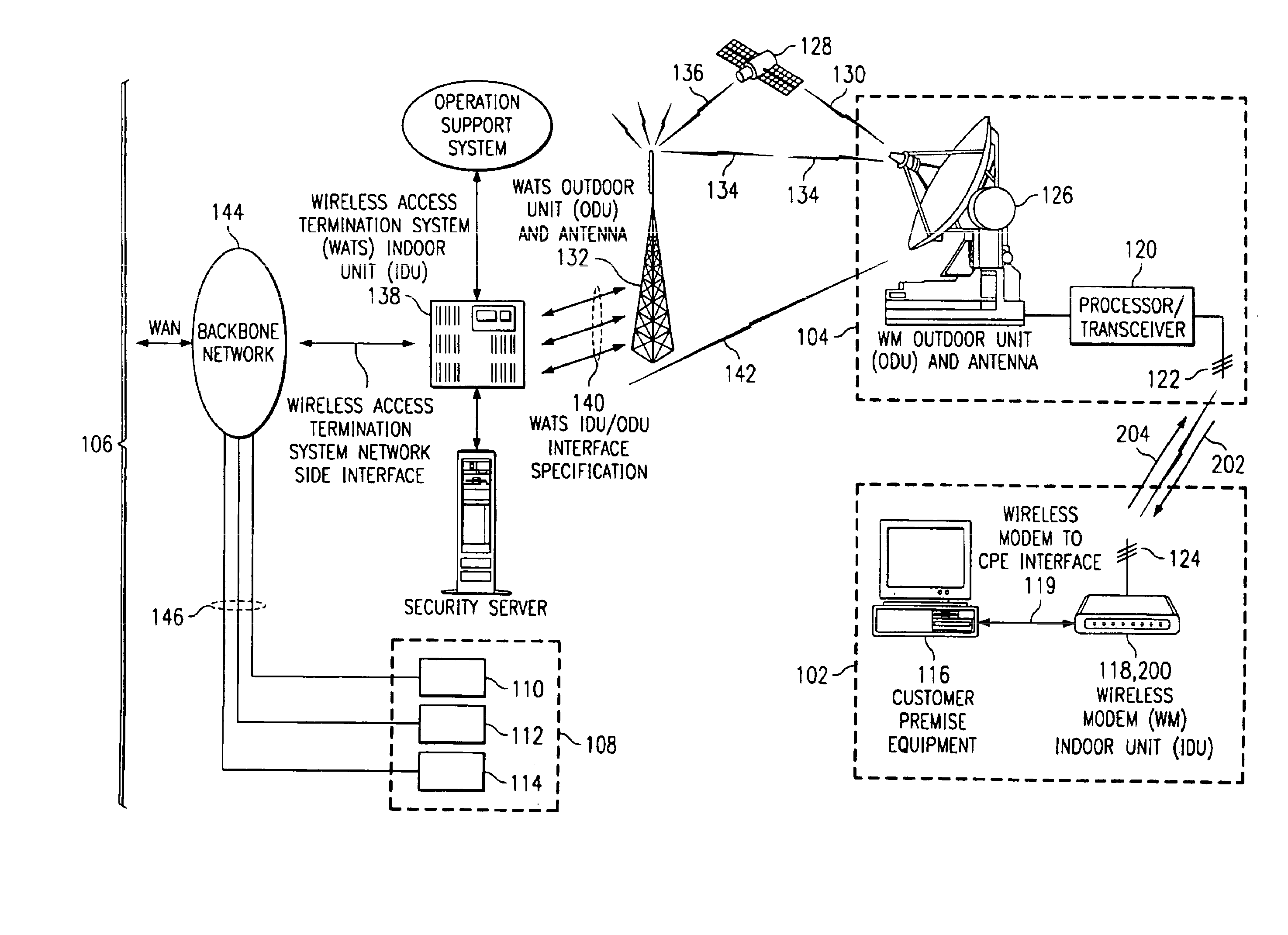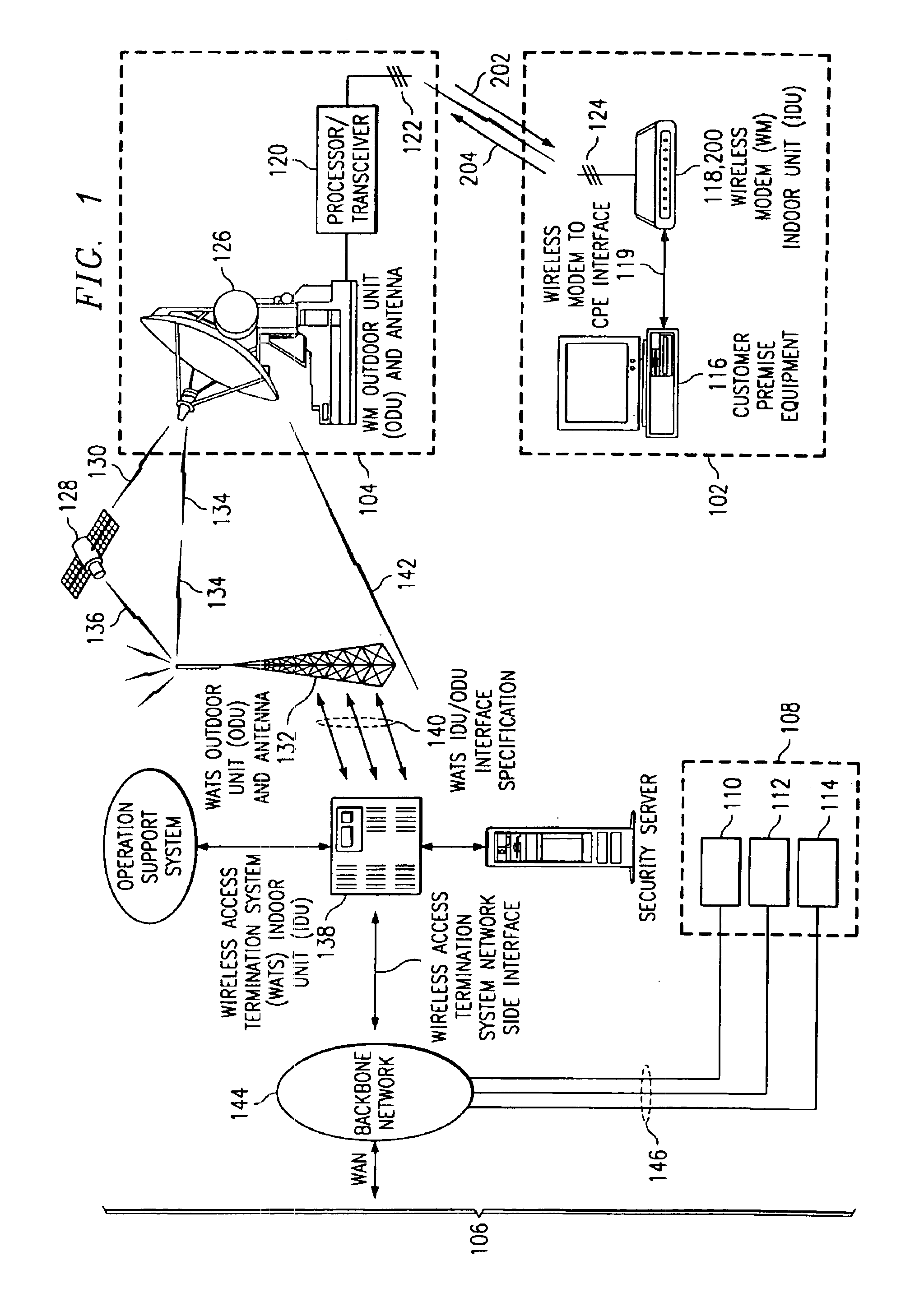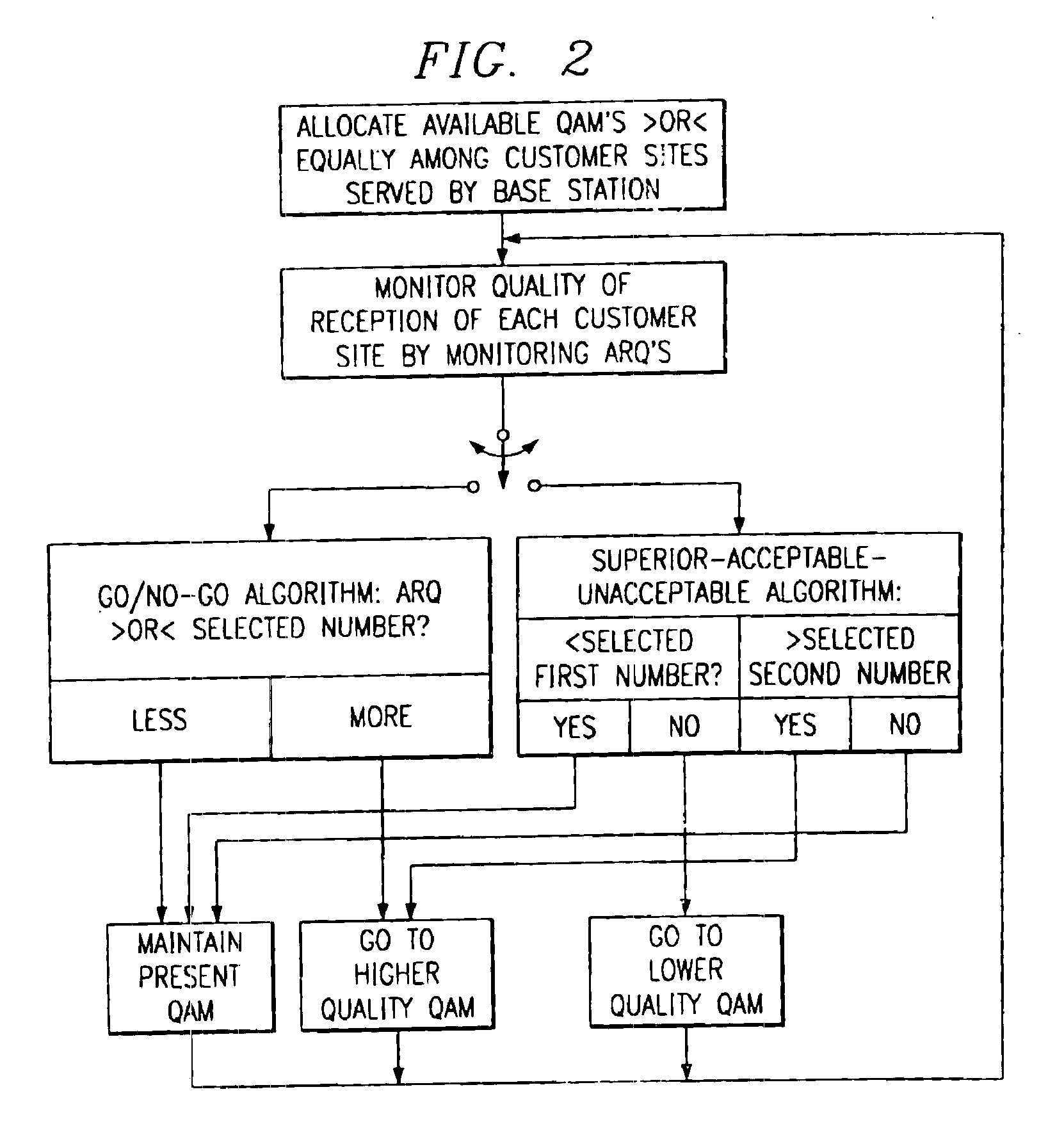Method of and apparatus for implementing adaptive downstream modulation in a fixed wireless communication system
a wireless communication system and downstream modulation technology, applied in the field of implementation of adaptive downstream modulation in a fixed wireless communication system, can solve the problems of affecting the quality of wireless communications, affecting the accuracy of wireless communications, so as to reduce the density of constellations, reduce the risk of degradation, and reduce the effect of transmission tim
- Summary
- Abstract
- Description
- Claims
- Application Information
AI Technical Summary
Benefits of technology
Problems solved by technology
Method used
Image
Examples
Embodiment Construction
[0032]Referring first to FIG. 1, there is shown a generalized, overview of a wireless communication system 100 in which the method and apparatus of the present invention ideally find use.
[0033]The system 100 includes a user or customer site 102, also referred to as the down stream or down load location, a base station 104, also referred to as the up stream or up load location, or the head end, and plural originating sites, collectively referred to by the reference numeral 106. The originating sites may comprise any of a variety of data and information sources 108, including computers 110, servers 112 and data / information storage units 114 of any convenient configuration. Typically, the data / information sources 108 may comprise some or all of the World Wide Web (“WWW”), multiple computers, servers and storage units 110,112,114 of which are scattered about the world. The function of the system 100 is to permit a user at the user site 102 to access data and information created by or st...
PUM
 Login to View More
Login to View More Abstract
Description
Claims
Application Information
 Login to View More
Login to View More - R&D
- Intellectual Property
- Life Sciences
- Materials
- Tech Scout
- Unparalleled Data Quality
- Higher Quality Content
- 60% Fewer Hallucinations
Browse by: Latest US Patents, China's latest patents, Technical Efficacy Thesaurus, Application Domain, Technology Topic, Popular Technical Reports.
© 2025 PatSnap. All rights reserved.Legal|Privacy policy|Modern Slavery Act Transparency Statement|Sitemap|About US| Contact US: help@patsnap.com



